Losing Myself at the Louvre Abu Dhabi — without Getting Lost
Wandering and wondering about spatial design and narratives
I took an Uber to the Louvre Abu Dhabi, just before 11 AM and an almost an hour later than I had planned since I had many, many things to squeeze into my only full day in this modern dessert metropolis. As I approached, I saw looming in the distance a flat-ish dome made of complex layers of grey structures punctured with octagonal shapes in semi-tesselation — layers that exist, presumably, to filter out the harsh sunlight and to project a kind of visual futurism.
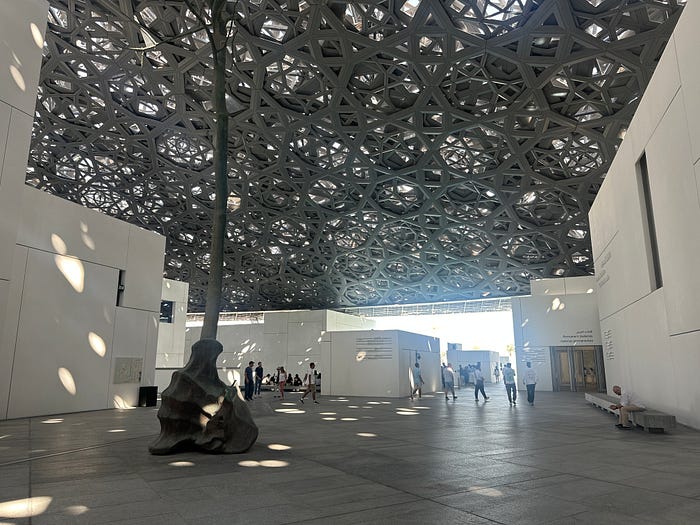
I didn’t know what to expect to find in the museum, and I honestly was feeling slightly guilty about not visiting a place more culturally Emerati first (alas, the locations of the many attractions forced my planning so). I ended up spending almost three hours with only one bathroom break, so yes, I was not disappointed with the programming.
Much like the simple facade on the outside, wayfinding into the exhibition area was direct and functional. This, it turned out, was a trick of the mind and a stark contrast to the main exhibition that packed an emotional punch. The first room traced our collective histories as a species by juxtaposing different beliefs and cultures through physical artefacts, as if to say: why are we fighting? With the global conflicts going on, it was good reminder to see how much we have in common with each other. Look at how we worship our gods, treat carry the memories of the deceased with us, and paint various curvaceous patterns on our things.
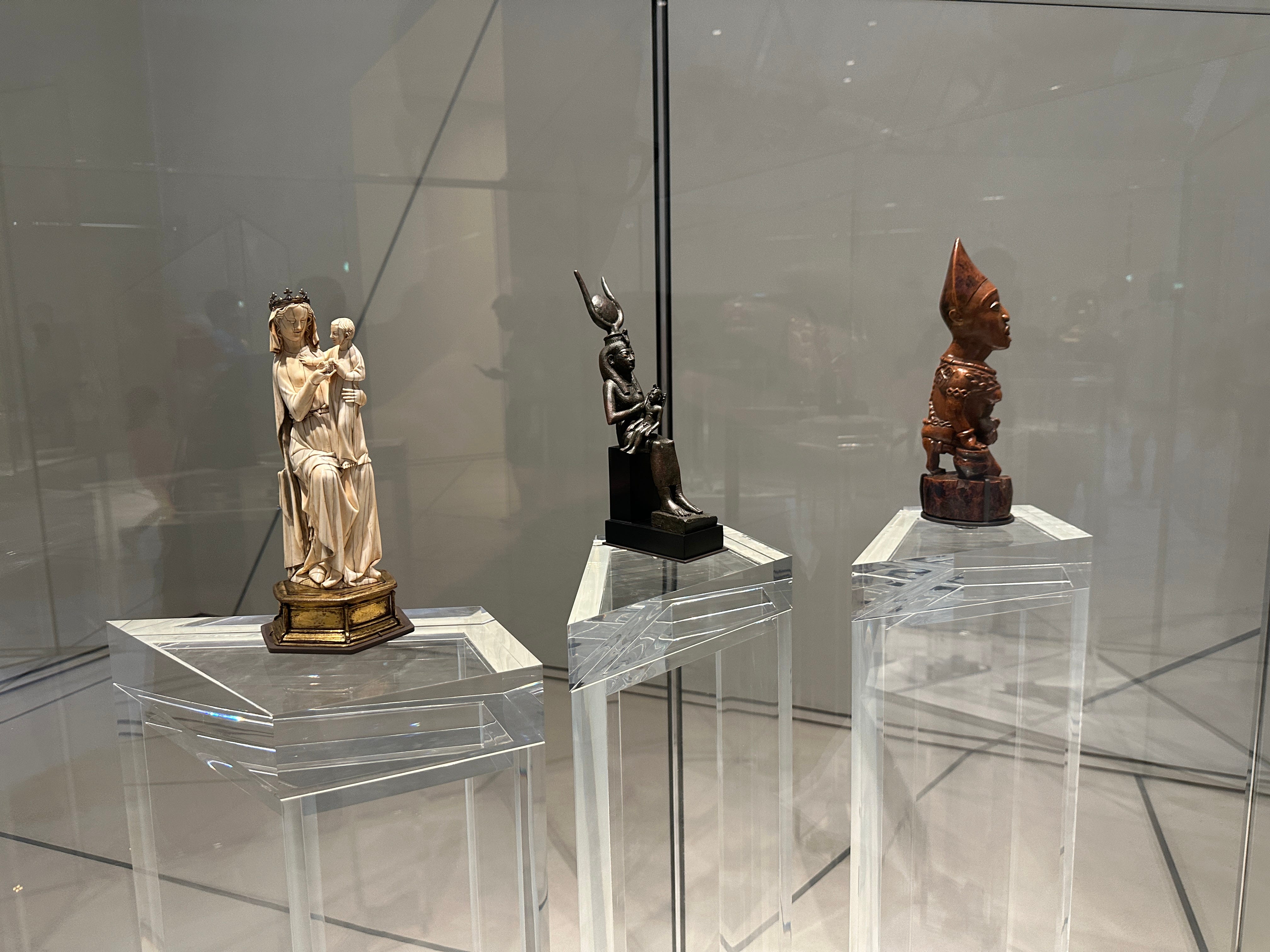
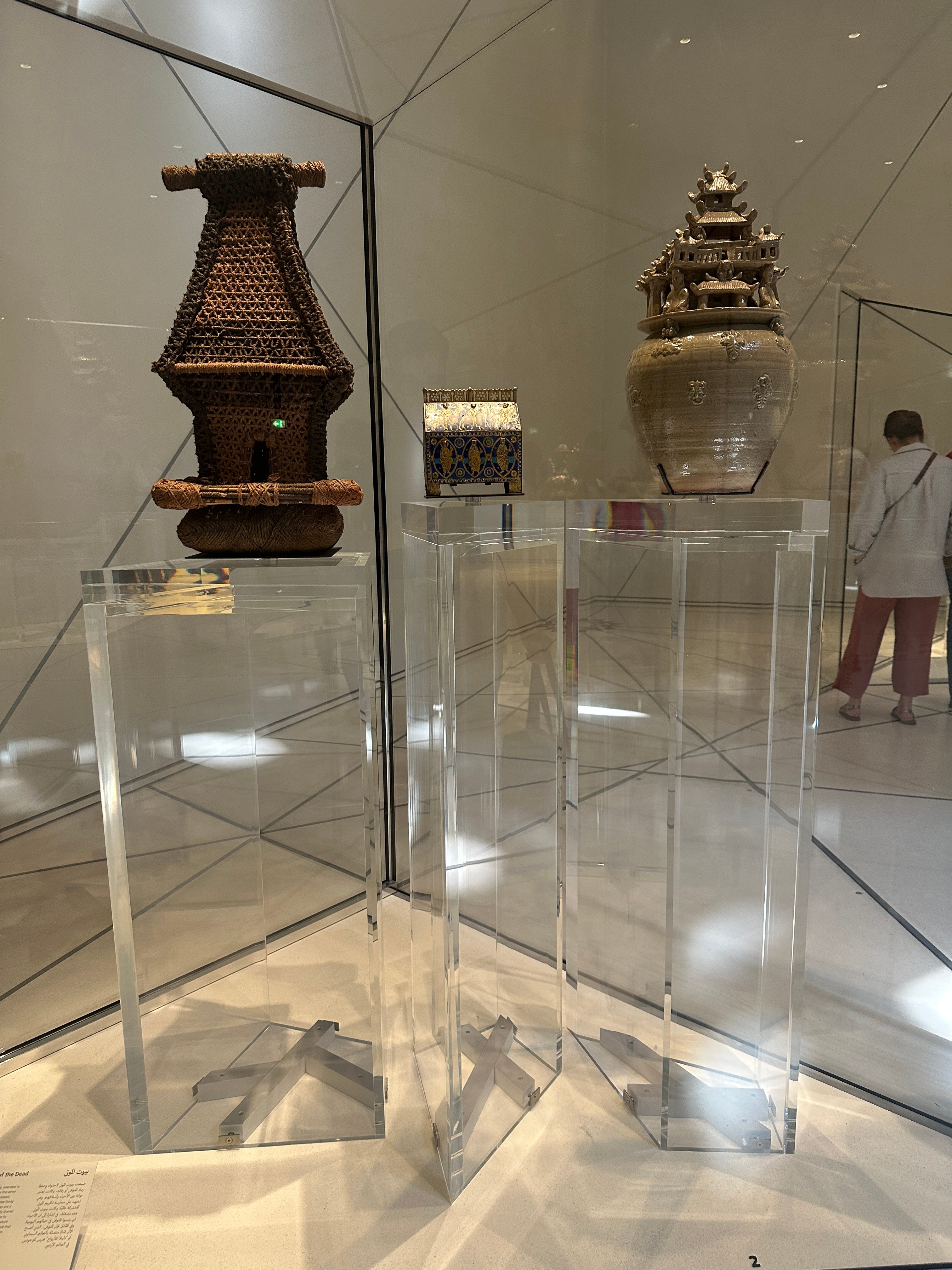
This multi-cultural take on a singular theme continues throughout the museum, and I am convinced we share a lot more history as a species than what I thought possible. I saw stone tablets with inscriptions of different languages, colourful ornamental plates, and replicas of a dragon and an oddly capybara-esque monster. Even if our borders do not meet, our imagination seemed to have emerged from a common humanistic thread. There was cross-pollination of ideas, surely, through trade and stories but it was more organic than globalization.
I told this story to a friend, who immediately asked me why, if we are more alike than different, are we still fighting wars? I think my friend was hoping I’d had read all the plaques (I did not).
It’s a good question and the default answer that pops into my mind was that we have always been fighting over resources. Our way of life and our traditions may vary by region due to climate and geography, but we all need food, water, shelter to survive. In this age of globalization where fruits are grown in one country, flown to another for packaging, then sold around the world, one would think that we would be free from fighting.
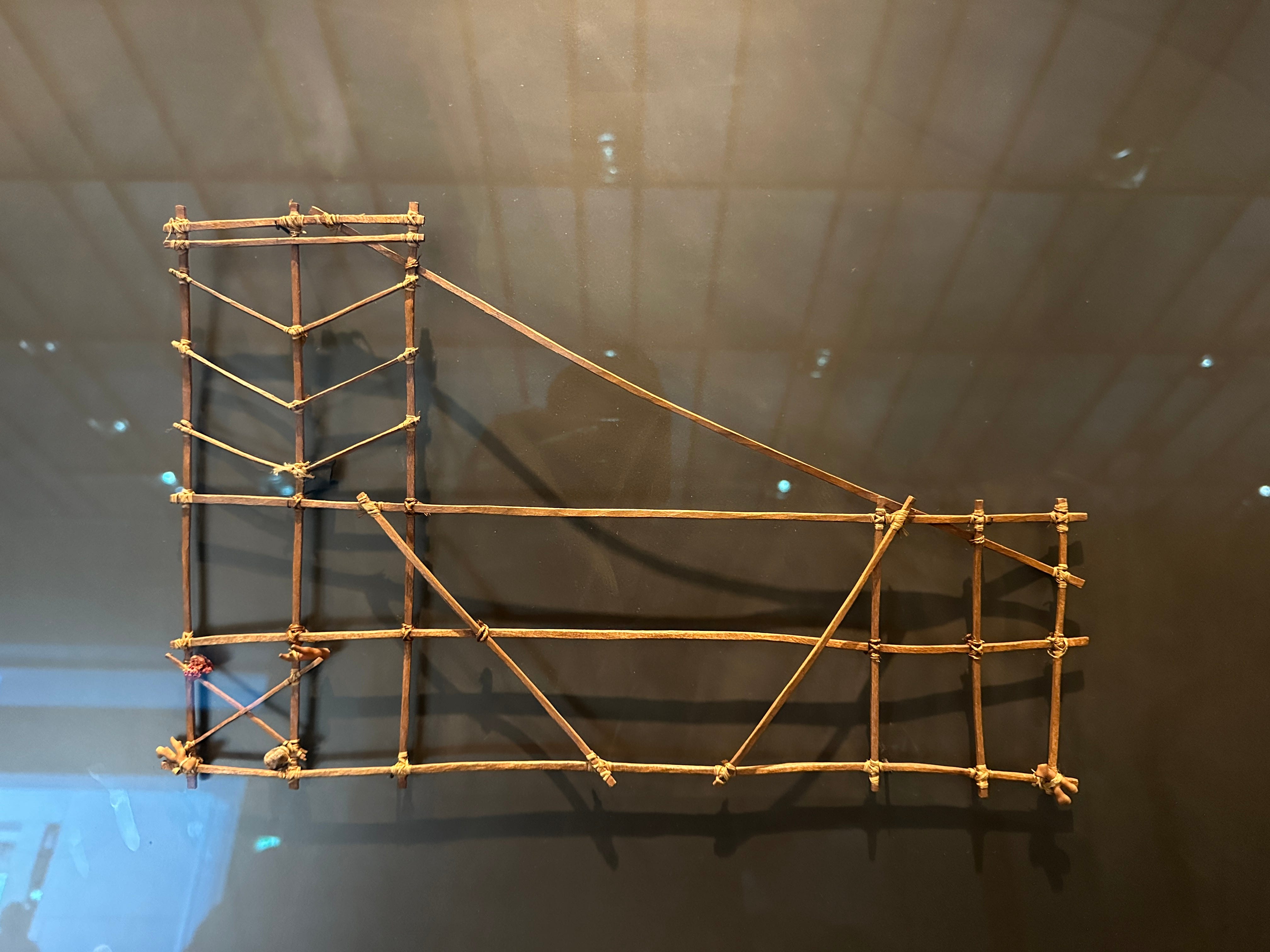
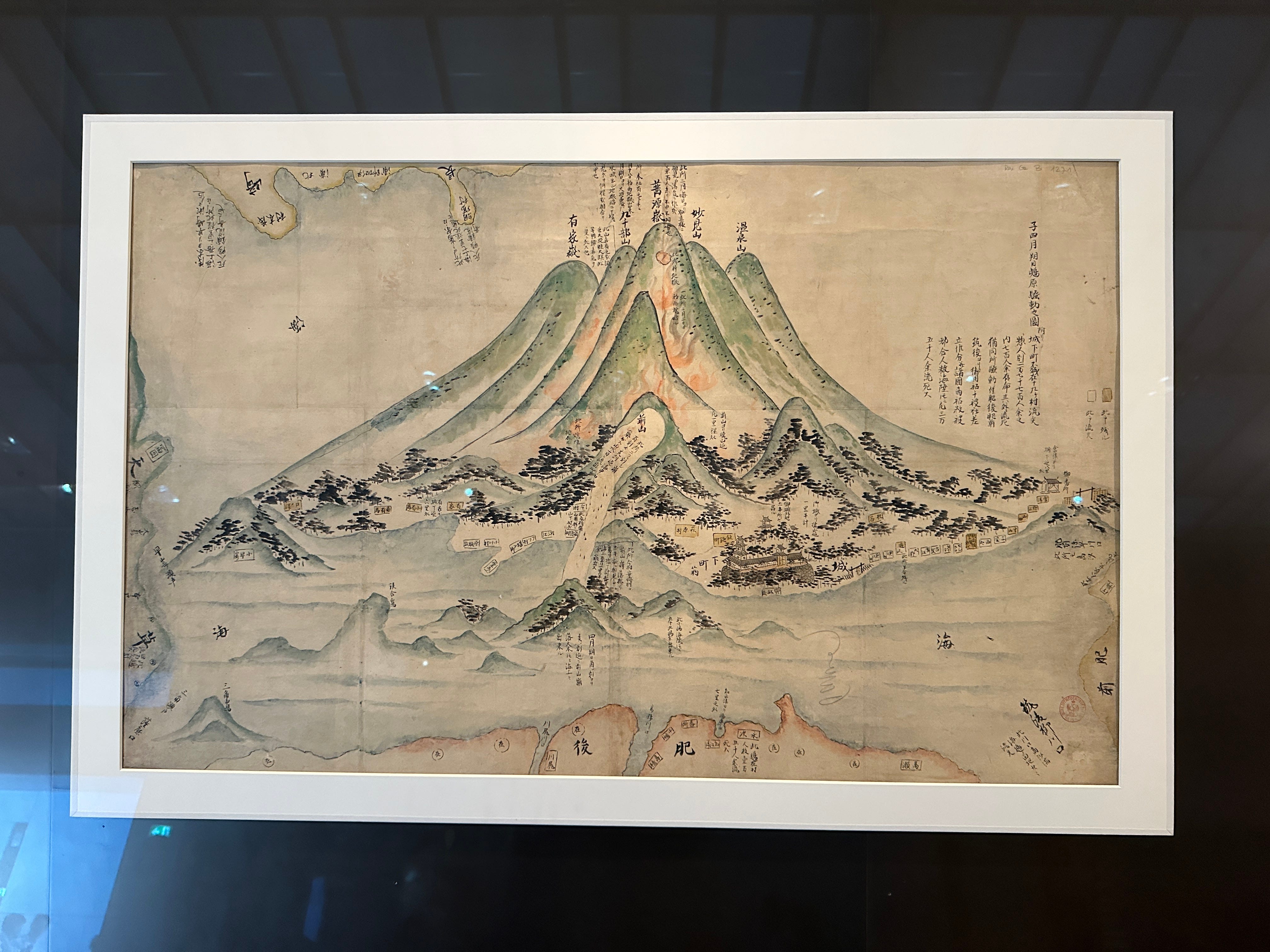

In a way, the wars and worries of the first human civilizations weren’t so different from the capitalistic hunt that we see today. As a nation, there is always a loser as we battle for power over access to resources old (land! people!) and new (attention! lithium!). The chase may be felt in the forms of profits and power at the institutional level, and reveals itself in the individual desire for recognition and stability. At the end of the day, we are still stuck in a struggle for survival by amassing the things that make us feel powerful.
The Louvre certainly attracted a big crowd of visitors, so from the very first room, the chatter echoing between the pristine white walls became distracting. I put on Piano Chill on Apple Music, an all-instrumental playlist and dove right into my personal sonic space with my AirPods on and notebook in hand as I dodged loud tourists on the phone discussing serious business and a thousand cameras pointing everywhere. It was a surreal walk through the exhibition area with a calm music in the background.

This permanent collection took most of the three hours and even though I stopped reading all of the signs, there was hardly a dull moment in the mix-and-match narrative and aesthetics.
It was a long one way exhibition sure, but there were moments of break and side adventures. There was a kind of classy playfulness and casualness to the space, if you stopped to look. Like this mirror with stickers of other tourists adoring a butt of a statue, or this display of ancient arrows that seemed to be accusing their friends of some Night at the Museum mayhem. There was a room shooting off the central walkway that functioned as a full-on art-deco hideout, another dark room hosting the full regalia of a samurai warrior.
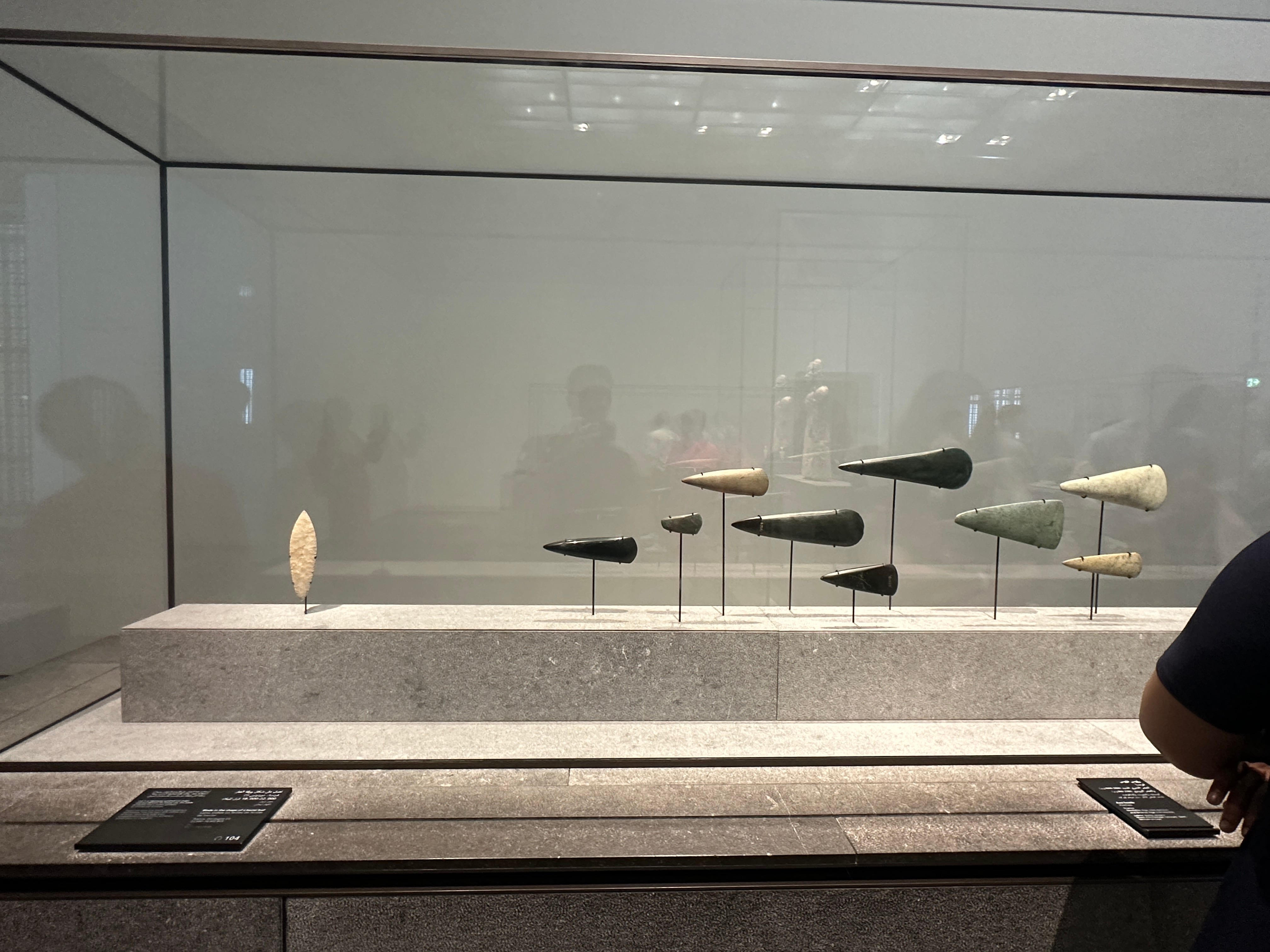

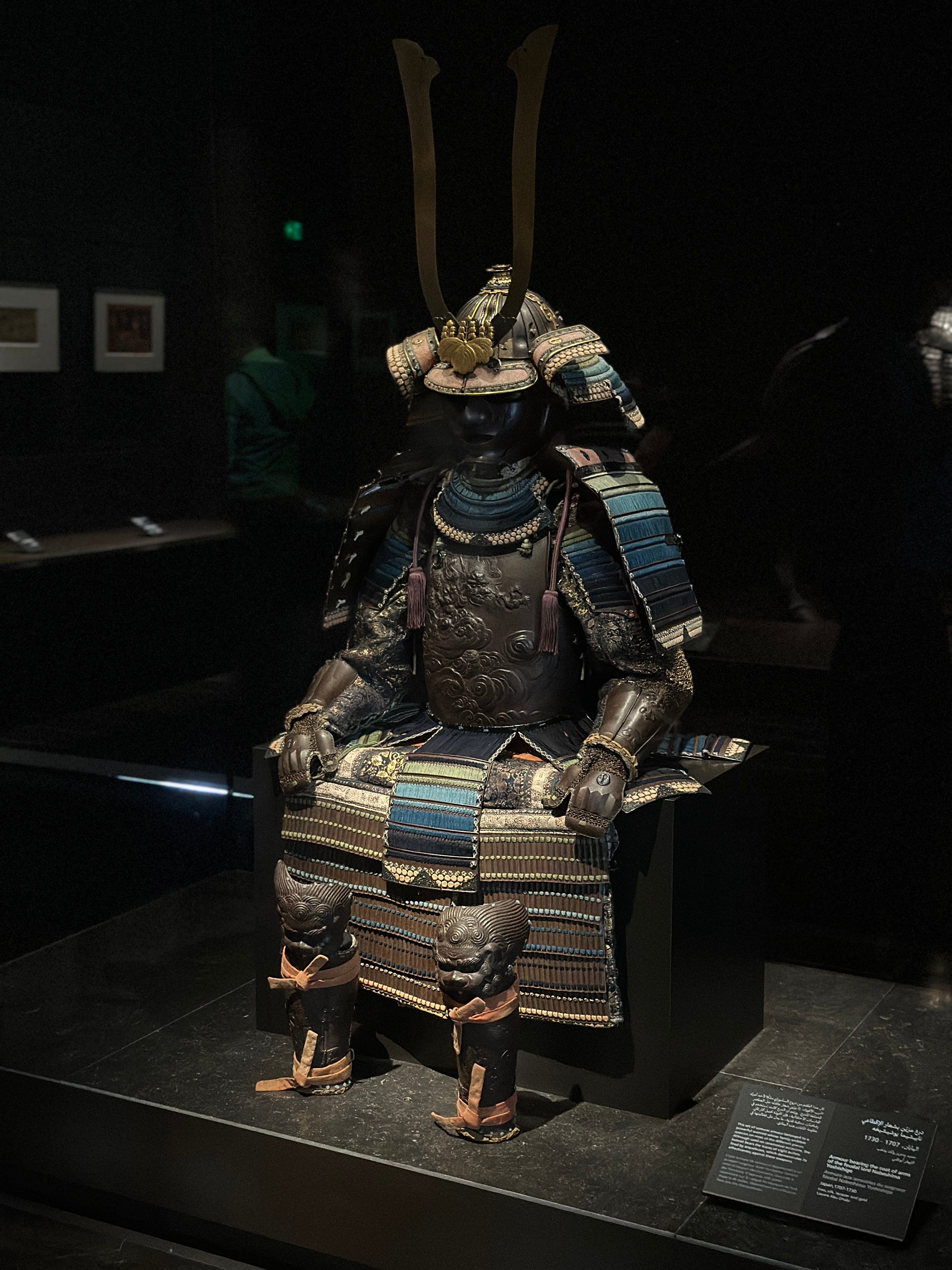
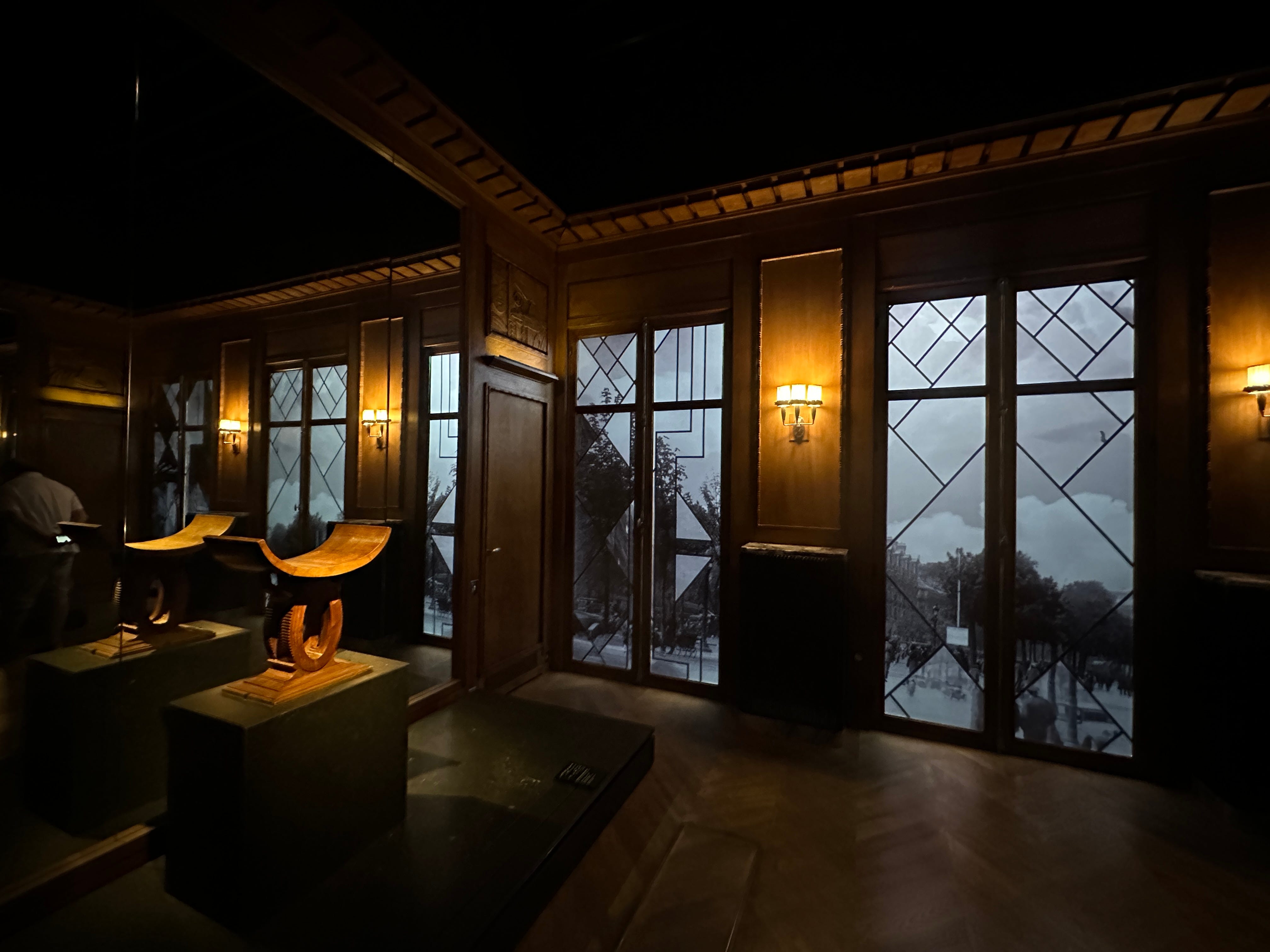
It was these little moments that were’nt exactly speakeasy (but surely wasn’t advertised either) that made the walk even more dynamic and interesting, in the best way possible, by creating a main narrative of human history punctuated by literal breakrooms of curious finds. I got to reflecting, by myself, the origins of war and aesthetics, and how much more intense we used to be with our handmade crafts. None of these were said explicitly (I thought). I was simply given the space to wander and wonder.
The whole experience was like a drive-through school, the artefacts like books on a library shelf. The journey was designed for patient discovery, rather than exposition — a fine line on which many of my favourite modern museums walked well.


Away from the permanent exhibit, there was a separate spaced-theme museum for kids (that I have to miss for timing reasons, sad) and special exhibitions that were remarkably region-specific. One was on the Islamic inspiration behind Cartier collections and the other on the Holy Books of the Abrahamic religions — both, again, raised questions about our common ancestry and shared histories. The displays were open, glamourous, visually-oriented so that you could lose yourself in the power they have on your gaze without thinking too much. Look now, plaque later kinda vibe (but never done out of convenience).
Both special exhibitions were spectacularly curated, their relevance to the geographic context making the visit more unique than a parroting of Western standards of museum curation that one might be expected to expect from an establishment like the Louvre.


My favorite, though, had to be the temporary exhibition “Transparencies” that invites “contemporary artists from the GCC (nationals and residents) working in sculpture and audio-visual installations suitable for outdoor spaces” to display their work across the myriad outdoors scenery within the Louvre. These works were distributed amongst the big atrium, the side corridors, and “hidden” nooks and crannies and squares that play host to pieces with cool visuals and engagements. There were insets on wall spaces with back light that could fit a painting or other artefacts, hallways in which to let fabrics sway in the breeze yet under shade.
All these features aroused a sense of exploration on a less guided path (as is the case with the indoors exhibition). I found myself checking out an empty rooftop area in the scorching November heat, and leaving the area more profoundly aware of the things that I miss when I turn off my curiosity in daily life.
At one point, I wasn’t sure if I was walking by a mall while window shopping or in a museum admiring an expensive artifact (these two contexts might not be so different in the future). This part of the Musuem really summed up the experience of discovery for me, where the spaces were designed for versatility in showcasing new works and in allowing visitors to lose themselves in the modern architecture.
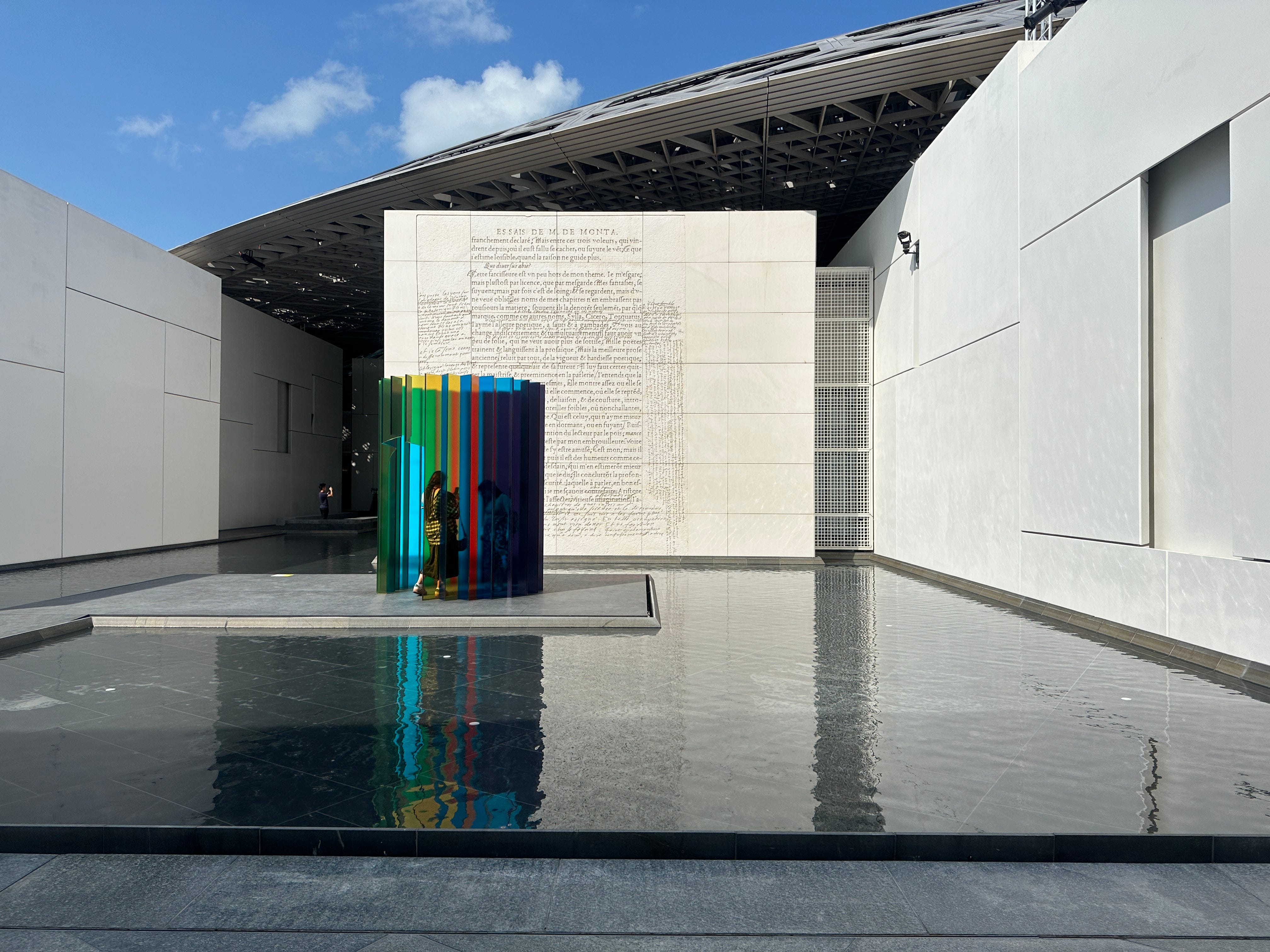
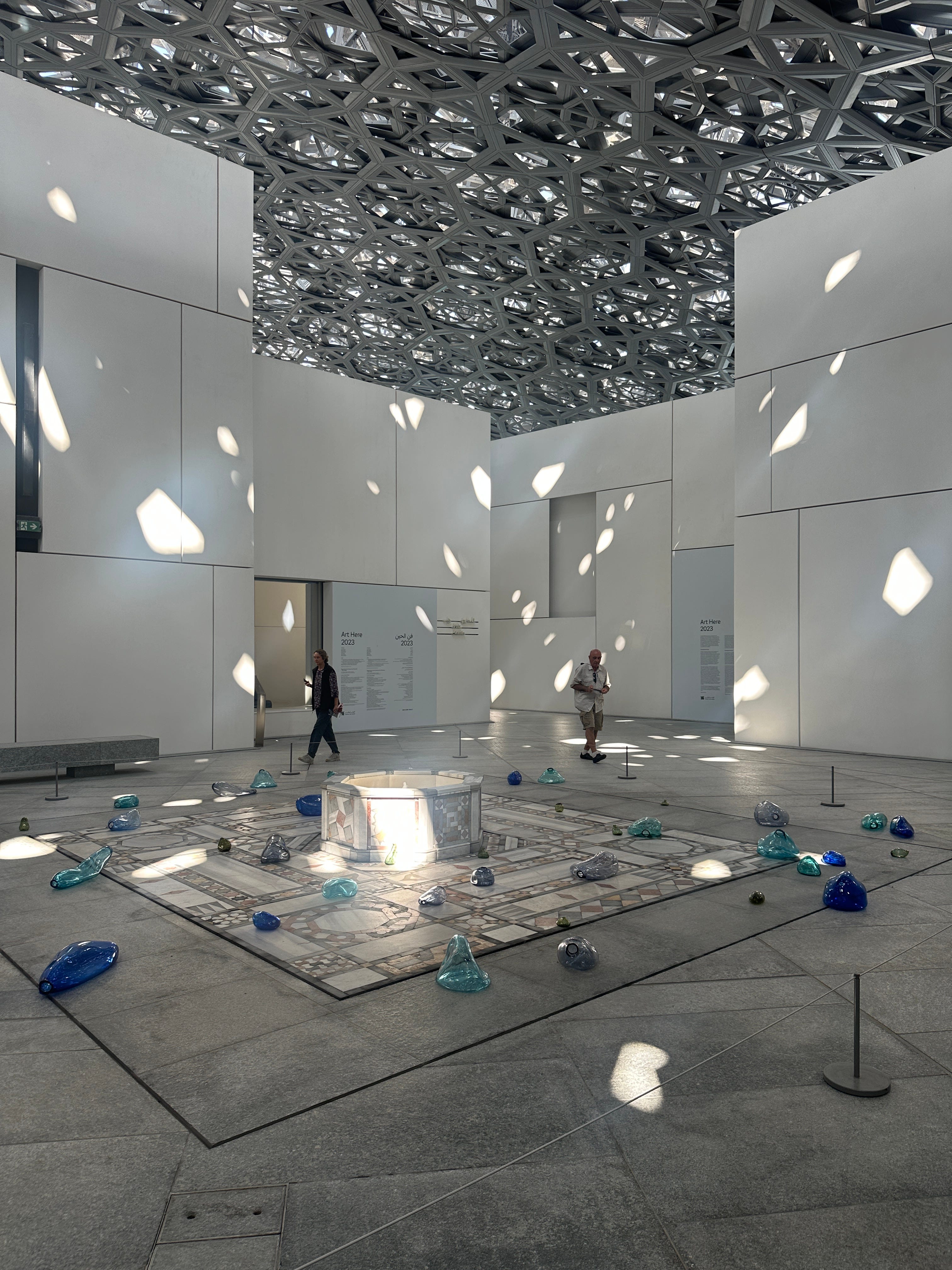

At the museum, I got to wander and wonder about the big and small questions of life, like the wars of yesteryears and the need for everyday beauty in today’s world. The Louvre, in all its curated spatial design, was a great scaffold in which to lose myself while my thoughts reached out to the artefacts that tell the stories of society.
I felt privileged to be able to self-reflect on my place in all our histories (it was not as bleak or belittling as expected) and emerged to find that curiosity might just be what save us from ourselves. There aren’t that many places like this anymore, the kind that provoked thought, even the ones we have to pay to visit.
